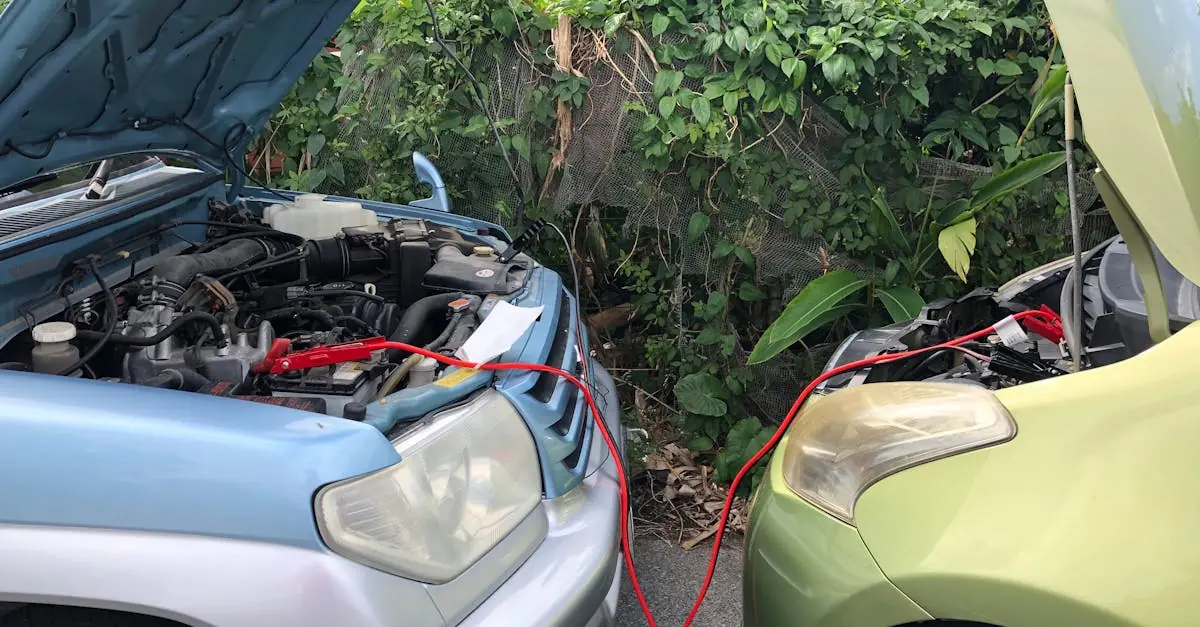Table of Contents
ToggleEver wondered what makes a governor tick? It’s like peeling an onion—layers of authority, responsibilities, and a dash of political drama. Understanding the powers of a governor isn’t just for political junkies; it’s essential for anyone who wants to navigate the wild world of state governance.
From signing bills into law to wielding the veto pen like a superhero’s weapon, governors hold a unique position in the political landscape. They’re not just figureheads; they’re the ones making the calls on everything from education to emergency management. So buckle up as we dive into the fascinating breakdown of gubernatorial powers, where politics meets power plays, and maybe even a few laughs along the way.
Overview of Governor Powers
Governors possess a range of powers critical to state governance. They serve as the executive leaders, responsible for implementing state laws and policies. Legislative authority includes signing bills into law, vetoing legislation, and addressing budget proposals.
In emergencies, a governor can declare a state of emergency, enabling access to additional resources and federal assistance. They often mobilize the National Guard or other state resources to address natural disasters or civil unrest effectively.
Appointing key officials forms another important aspect of gubernatorial power. These appointments may include judges, department heads, and board members, allowing governors to shape state agencies and influence state policy.
Beyond administrative responsibilities, governors play an essential role in advocacy and public policy. They promote legislative agendas and can influence public opinion on key issues. Engaging with the media also helps them communicate state priorities to the public.
The power of clemency reflects an individual governor’s authority. This includes granting pardons and commutations, which may significantly impact lives and reflect the governor’s approach to justice.
While state constitutions define many powers, they can differ significantly across states. Variation in the extent of authority can affect how governors interact with legislatures and manage their state governments. Understanding this complexity reveals the nuances of governorship across the United States.
Types of Powers
Governors wield various powers essential for state governance, categorized into executive, legislative, and judicial authorities. Each power plays a critical role in how governors influence state operations.
Executive Powers
Executive powers enable governors to oversee state administration effectively. These authorities include enacting laws, issuing executive orders, and managing state budgets. In times of crisis, governors swiftly declare states of emergency, providing rapid mobilization of resources. They appoint key personnel, such as department heads and agency directors, to ensure efficient operation within the state. Furthermore, executive powers allow governors to manage the state’s National Guard during emergencies, guaranteeing a coordinated response.
Legislative Powers
Legislative powers grant governors essential functions in the law-making process. Governors can sign bills into law, providing the final approval required for legislation to take effect. Veto authority permits governors to reject bills that do not align with their policies or the needs of their constituents. Additionally, they actively propose budget plans to the legislature, indicating state funding priorities. Collaboration with legislative bodies becomes vital for shaping successful laws that reflect the governor’s agenda.
Judicial Powers
Judicial powers offer governors the ability to influence the state’s legal landscape. Governors can grant clemency, including pardons and commutations, reflecting personal approaches towards justice. Appointments of judges at various levels also fall within the governor’s purview, allowing them to shape the judiciary. This influence can significantly affect legal interpretation and application in the state. Moreover, governors can issue reprieves, providing temporary relief to offenders while the legal system reassesses their cases or circumstances.
Breakdown of Governor Powers by State
Understanding the specific powers of governors across different states reveals significant variations and influences.
Variations Across States
State constitutions define gubernatorial powers, leading to notable differences among states. For example, California’s governor possesses broad executive authority compared to a more limited role in Vermont. Some states grant governors line-item vetoes, while others do not. Moreover, the ability to declare a state of emergency varies; in Texas, the process requires legislative approval, while in Florida, it rests solely with the governor. Each state’s legal framework shapes how governors interact with legislative bodies and manage emergencies, making the governorship a unique role in every state.
Key Factors Influencing Powers
Several factors impact the extent of a governor’s powers. Political culture plays a significant role, with states like Alabama exhibiting strong gubernatorial authority due to historical precedents. The presence of a dominant political party can either enhance or restrict a governor’s effectiveness. Furthermore, the size and structure of a state’s legislature influence gubernatorial interactions; smaller legislatures may yield more power to governors. Lastly, public opinion often sways governance, as governors adjust their priorities based on the electorate’s preferences and feedback.
Implications of Governor Powers Breakdown
The breakdown of governor powers significantly impacts state governance. Increased executive authority often leads to swift decision-making during crises. Governors exercising legislative powers directly influence the law-making process, altering the balance of power among legislative bodies. States with limited gubernatorial authority may experience slow responses to issues, as multiple branches must collaborate.
Changes in governor powers can also affect political dynamics. Governors wielding substantial discretionary power often shape policy agendas and can drive significant reforms. Variations in state constitutions create disparities, making some governors more powerful than their counterparts. The ability to veto legislation, for instance, allows some governors to redirect state priorities more assertively.
When governors appoint key officials, they shape state agency leadership, influencing how policies are implemented. This appointment power holds implications for judicial independence, as gubernatorial influence can sway legal interpretations. Additionally, the clemency power raises discussions about equity in the justice system, reflecting individual governors’ philosophies on justice and rehabilitation.
Public perception of governors plays a vital role in shaping their authority. High approval ratings can enhance a governor’s ability to push ambitious agendas, while low support can constrain their effectiveness. Governors’ communication with the media affects transparency and accountability, becoming crucial in maintaining public trust.
Understanding the nuances in the breakdown of governor powers enriches discussions about state governance. Variations in authority create frameworks that shape policy decisions, impacting citizens’ lives across different states. The complexities involved in these powers serve as a reminder that governance is not one-size-fits-all, highlighting the need for tailored approaches to state challenges.
The breakdown of gubernatorial powers reveals the intricate dynamics of state governance. Each governor’s authority shapes not only policy outcomes but also the political landscape within their states. Understanding these powers is essential for grasping how decisions are made and how they affect citizens’ lives.
As governors navigate their responsibilities, they wield significant influence over legislation, emergency management, and judicial appointments. The variations in powers among states underscore the importance of local political culture and structure. This complexity invites ongoing discussions about the balance of power and the effectiveness of governance. Ultimately, the role of governors remains a critical factor in shaping state policies and addressing the unique challenges each state faces.



